PART 6 ? Vietnam May 1971 to March 1972
Second Tour ? South Vietnam ? 1 May 1971 ? 12 March 1972
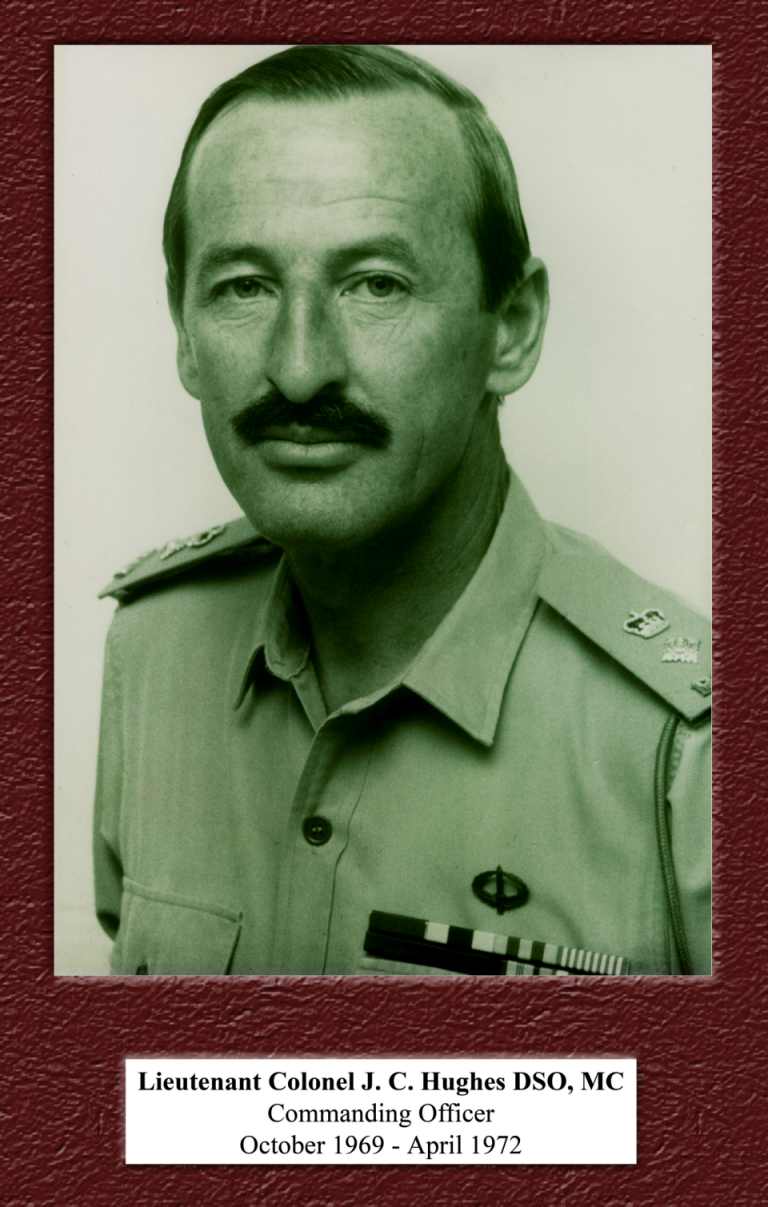
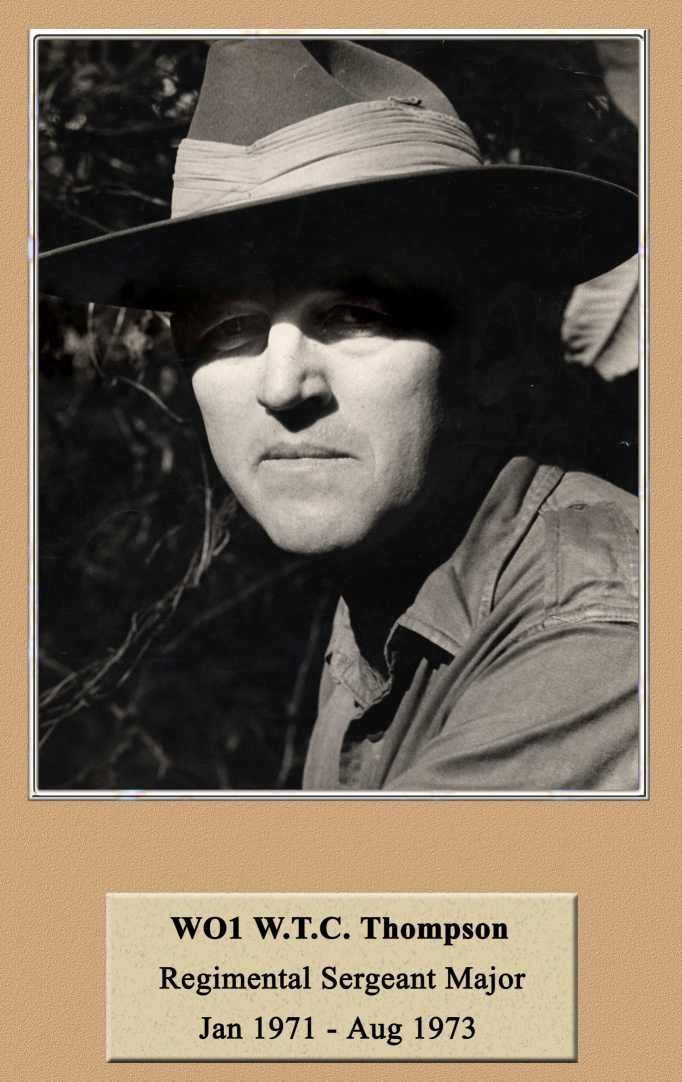
Ba Ria
History
The main influx of people into this area appears to have been in the 1700?s. The majority came from Central Vietnam, e.g. Binh Dinh province.
Phuoc Tuy province as it was named when the war was on was a relatively new name. The province is now known as Ba Ria ? Vung Tau. The general area was known as Ba Ria (Ba: Vietnamese for Mrs), which was part of the then larger province of Gia Dinh and Bien Hoa. Amongst the early settlers was a woman by the name of Tia Ria. She became responsible for the widespread cultivation of the area generally defined as Phuoc Le.
During the unrest sweeping the land during the 1920?s and onwards, the province of Phuoc Tuy was created (1956). Phuoc Le, which was one of the largest villages located on the highway 15, was selected to become the province capital. Because of the connections from the 1700?s the name Ba Ria was assigned as the name for the province capital.
Phuoc Le (Ba Ria) is the commercial centre of the province and the status was vastly improved by the upgrading highway 15 to Saigon. This road gave a quick and reasonably economic means of improving trade between the province capital and Saigon.
The following was the workforce statistics in August 1971
- Merchants 50%
- Government Employees 20%
- Farming, craftsman, labourers 16%
- Tradesman 4%
- Fishing and allied trades 10%
Also at that time and because of the presence of the Free World Military Assistance Forces (FWMAF) there was a demand for such things as laundries, and brickworks for housing projects.
Other private enterprises included:
- 3 Constructions companies
- 2 construction supply companies
- 2 brickwork and contracting companies
- 2 ice-work factories (The Australian Task Force purchased ice from them for the soldiers in Nui Dat)
Present
The province is not known as Phuoc Tuy now. It has been renamed Ba Ria ? Vung Tau Province.
The
provincial capital has expanded greatly and is virtually unrecognizable as the
same area as in 1971. One area that is clearly visible and will be shown to
visitors is the Ba Ria Cinema. Today the cinema is closed and has not been used
since the TET (equivalent or same as Chinese New Year) offensive of 1968.
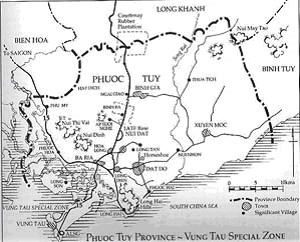 This is where the VC holed up
when trying to withdraw back to the jungle during the TET 1968 battles. In
those days the Vietnamese Army was supposed to look after the towns and cities
and the Australians and New Zealanders were to look after the jungle. In this
case the Australians had to come into Ba Ria to drive the VC out. Their last
major stand of the TET was in the theatre. I believe that 3 RAR (first tour)
was the unit that forced them out. I remember that when I saw the theatre in
1969 there were still holes through the walls where M72 anti-tank rockets and
other high explosive devices were fired into the building. The damage has been
repaired, but the theatre has not been used since. No one could tell me why it
has not been used.
This is where the VC holed up
when trying to withdraw back to the jungle during the TET 1968 battles. In
those days the Vietnamese Army was supposed to look after the towns and cities
and the Australians and New Zealanders were to look after the jungle. In this
case the Australians had to come into Ba Ria to drive the VC out. Their last
major stand of the TET was in the theatre. I believe that 3 RAR (first tour)
was the unit that forced them out. I remember that when I saw the theatre in
1969 there were still holes through the walls where M72 anti-tank rockets and
other high explosive devices were fired into the building. The damage has been
repaired, but the theatre has not been used since. No one could tell me why it
has not been used.
The
Battalion?s advance party departed Australia on 30 April 1971, for the unit?s
second tour of Vietnam, only this time lead by Lieutenant Colonel J Hughes MC
and the RSM WO1 W.T.C. (Wally) Thompson who took over on 1 June 1970 and looked
after the men until 14 August 1973. WO1 Thompson was later to become the Army?s
first RSM ? Army. There were one hundred and forty one men who had previously
seen service in Vietnam. The New Zealanders joined the unit in Nui Dat in early
May 1971. They had come from Singapore. The main body arrived on 22 May 1971
and operations began soon after the Battalion concentrated at Nui Dat. The Audemars Piguet Replica Watches Battalion relieved 2 RAR / NZ (ANZAC) Battalion at midnight on the 23 May 1971
and became 4 RAR / NZ (ANZAC) Battalion a unit under the command of 1st
Australian Task Force located in Nui Dat.
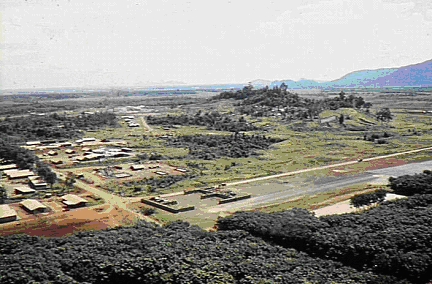
Nui Dat looking south west. SAS hill is the prominent feature in photograph
The hills to the right are the Nui Tai Vai
Luscombe airfield is in the foreground
4 RAR / NZ
(ANZAC) Battalion, after a week settling in and ?in theatre training?, moved to
the bush for the remaining seven and a half months of its tour. This meant the
soldiers spent their tour entirely on operations during the monsoon season.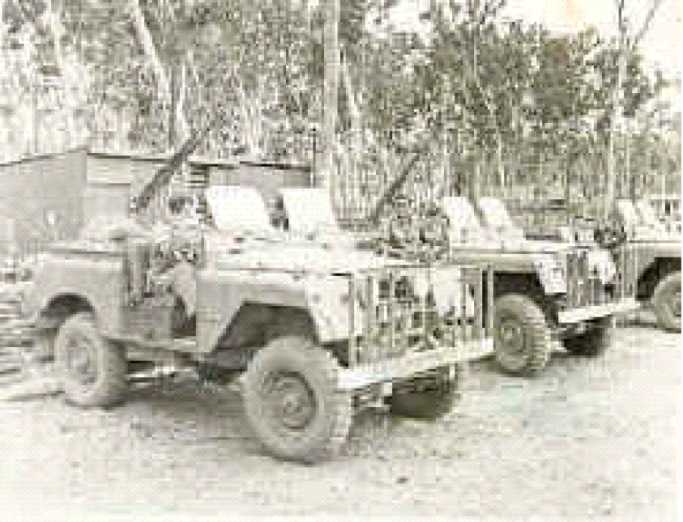
Vehicle Gunships ready to escort vehicles around the province or to Vung Tau.
Used at night to reinforce company defences within Nui Dat if required
The Anzac Battalion conducted nine (9) major operations against their targets, the 274 Viet Cong (VC) Main Force Regiment , 33 North Vietnamese Army Regiment and D445 VC Battalion. The unit D445 is still the Vietnamese Army?s unit in the province today.
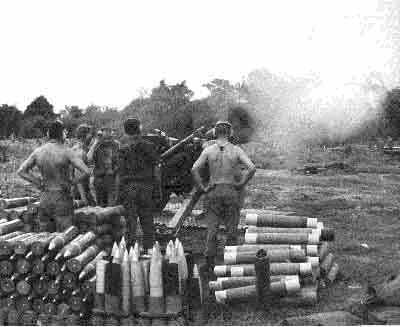
Artillery firing a fire mission in support of the battalion
Back and
forth through the jungle and rubber plantations the soldiers of the battalion
were engaged in tracking, ambushing and attacking the enemy bunker positions.
The Battalion was actively engaged on operations until 9 December 1971. For two
months the Battalion was the only Australian Infantry unit in the theatre of
operations.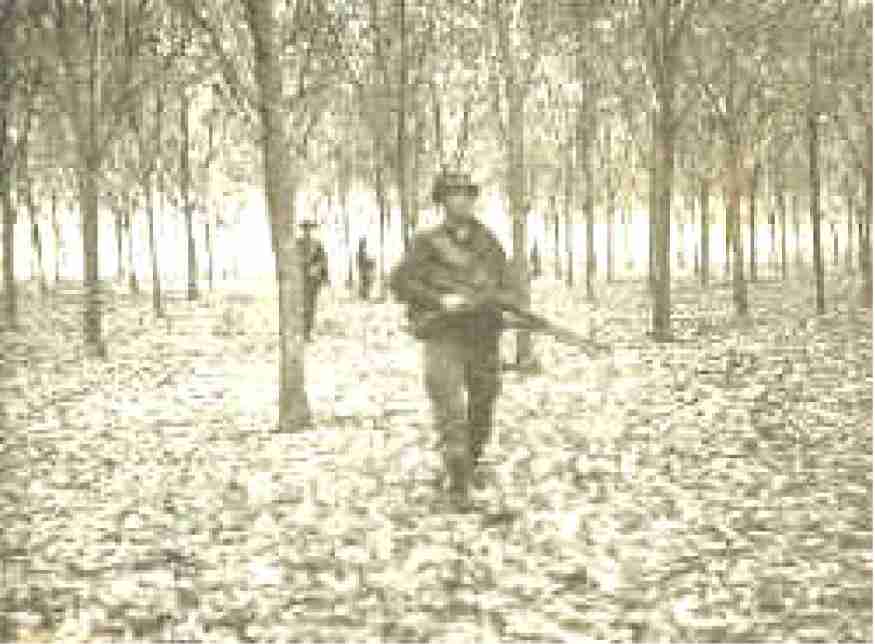
Operating in rubber near FSB Courtney
On the 18th
August 1971 that year, the Australian Prime Minister William (Bill) Mc Mahon had
announced the withdrawal of Australian troops by Christmas. In December, the
Battalion less Delta Company and 1 Troop, B Squadron, 3 Cavalry Regiment boarded
the HMAS Sydney (an old aircraft carrier converted to a troop carrier and
affectionately know as the Vung Tau Ferry) and returned to Townsville
(the Battalion?s home). Delta Company under the command of Major Jerry Taylor
remained in Vung Tau South Vietnam to protect the units of the 1st
Australian Task Force Headquarters (reduced in size) and 1st
Australian Logistic Support Group whilst they were engaged in back loading of
equipment to Australia until 13 March 1972. replica watches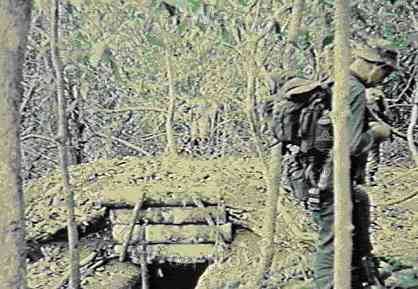
Typical bunker system
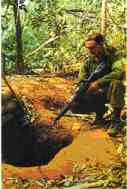 -
hard to see until you are right on top of them
-
hard to see until you are right on top of them
-
Bunkers as shown here were often linked by tunnels to
-
escape holes
-
underground food and supplies storage
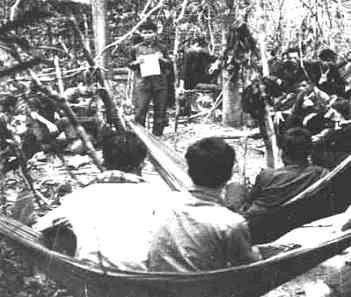
-
medical areas
-
kitchens
-
rest areas
-
HQ Centres
VC Political Officer conducting propaganda to his unit (captured Photograph)
In this final tour of Vietnam the Battalion had the honour of being the last ANZAC Battalion to serve in Vietnam (also 4 RAR was the last Battalion to leave Borneo in 1966).
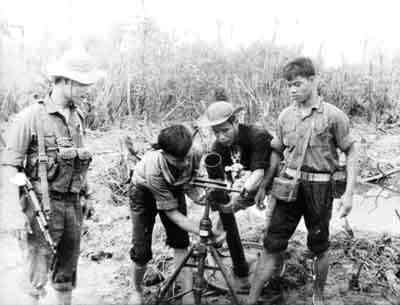
Viet Cong about to fire a mortar (captured photograph)
During its tour of duty the Battalion killed ninety one (91) of the enemy and captured five (5) for the loss of eight 4 RAR / NZ (ANZAC) soldiers.
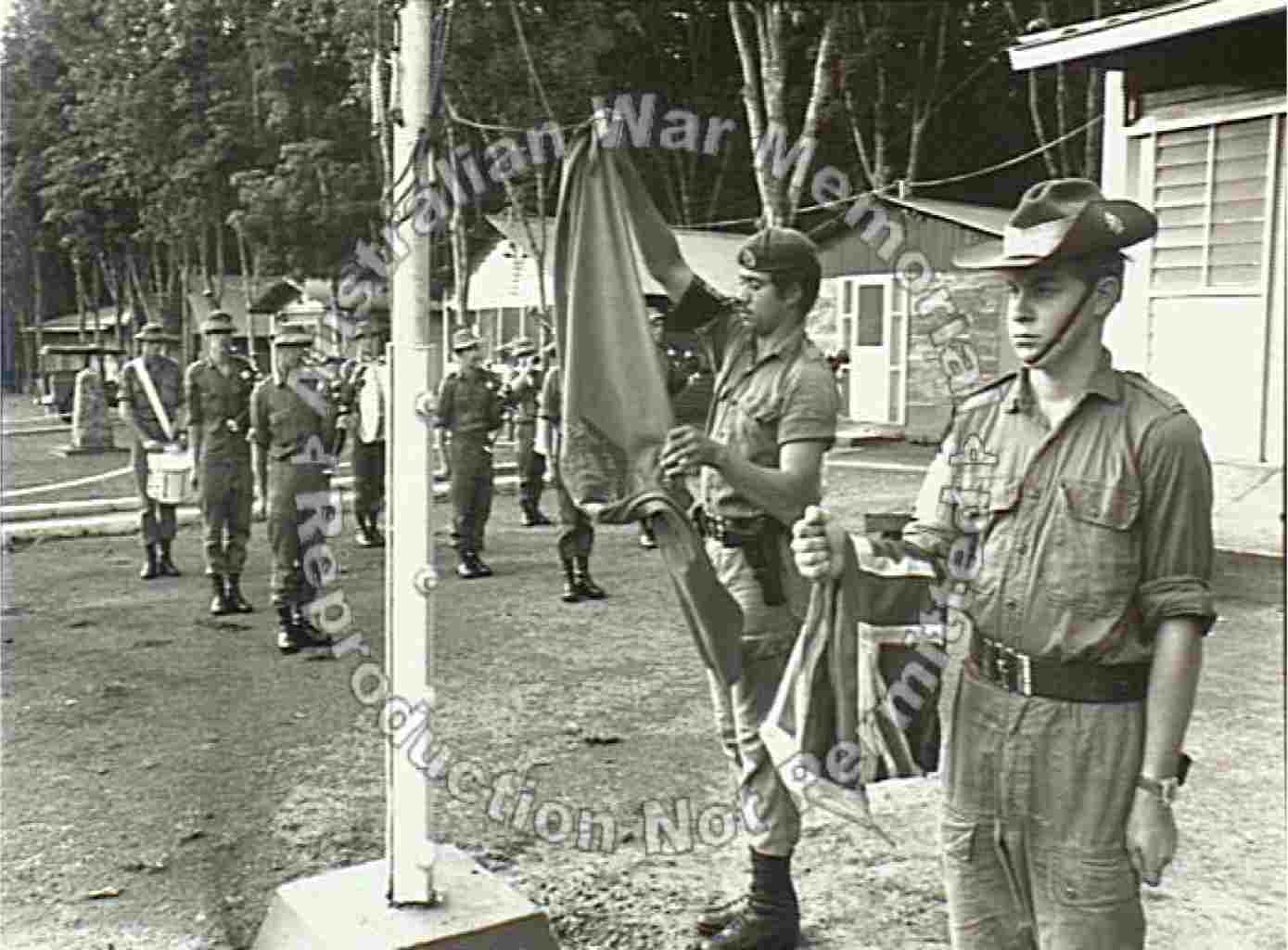
Nui Dat November 1971, lowering the flag for the last time. A simple ceremony by a small element of 4 RAR/ NZ (ANZAC) Battalion with the unit band led by Pipe Major Doug Thorenson in the background. The flag bearers are New Zealander Regimental Policeman Pte Tai Whatu and Australian Regimental Policeman Pte John Skennar
For those interested in reading more about the second tour of 4 RAR, the book ?Fighting Fourth? is a good indication of the Battalion?s tour and will be displayed on this site at a later date.

War Memorial to the NVA / VC killed in Phuoc Tuy Province Memorial is located between Baria and Hoa Long (Near Nui Dat) Photograph taken February 2003
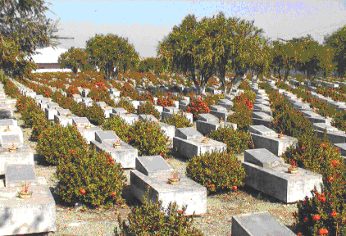
A view of the many headstones in the War Cemetery
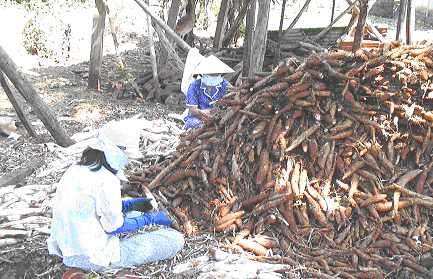
Women preparing tapioca prior to sale in the market
This is very close to where the battle of Long Tan took Place
Nominal Roll of those who served in Vietnam 1st & 2nd Tours
(Due to the size of this file, you can view its contents or right click on the icon below and choose "Save Target As")
South Vietnam Nominal Roll 1st & 2nd Tour
104 Field Battery
Artillery (Courtesy MAJ Crawrord)